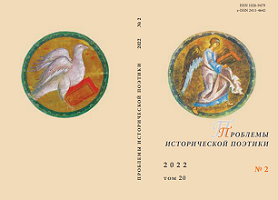Образ благочестивого христианина в старообрядческих рукописных сочинениях XVIII–XX вв.
The Image of a Pious Christian in the Old Believers’ Handwritten Texts of the 18th–20th Centuries
Author(s): M. G. BabalykSubject(s): Culture and social structure , Social Theory, Sociology of Religion, History of Religion
Published by: Петрозаводский государственный университет
Keywords: handwritten books; Old Believers; the image of a Christian; virtue; fashion; worldly custom; piety;
Summary/Abstract: The article presents an analysis of Old Believers’ handwritten texts, in which special attention is paid to the formation of the image of a pious Christian. These are didactic texts of various genres, which targeted primarily young people. During the period of Peter the Great’s transformations, European fashion was rapidly replacing traditional clothing. External changes affected the inner, spiritual world of a person. The Old Believers’ preachers directed all their efforts to save their flock. Using the Holy Scripture books, the works of the holy fathers, as well as other authoritative works as sources, the authors of works on the Christian image placed the necessary accents and collected arguments in defense of tradition. The number of surviving versions of these works suggests their extreme popularity. Usually the narrative in them is based either on the principle of contrasting the images of fashionistas and those of pious Christians, or on the principle of the negative connotation of trendy clothes. In some collections, these texts are presented as part of thematic collections. Against their background, Timofey Andreev’s essay “About newfangled clothing and wearing long hair” stands out. The article also analyzes the work of “The Monk Zacharias to his disciple Euphemia,” the short novel about “sacristy decoration,” visions and dreams of Danila Grigoriev, “About the Beauty of the Divitsa” and others. The authors condemn all fashionable innovations, referring to the authority of the holy fathers, cite various sources, and the experience of visionaries and martyrs for the faith as arguments. Special attention is heeded to the female image: the humble Christian is juxtaposed with the fashionistas. Any interference with natural beauty is condemned: adornment, cosmetics, hair curling and the use of the “beauty mark language,” which has spread throughout social circles in the 18th century. The listed works helped to maintain the authority of Old Believers’ teachers, to transmit experience and traditions.
Journal: Проблемы исторической поэтики
- Issue Year: 20/2022
- Issue No: 2
- Page Range: 264-279
- Page Count: 16
- Language: Russian

